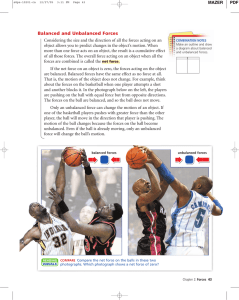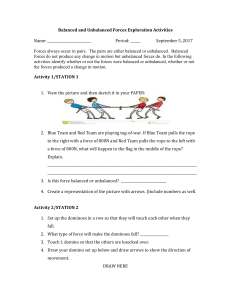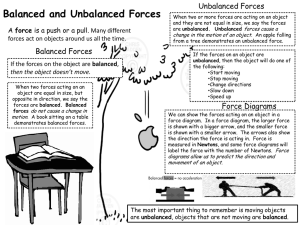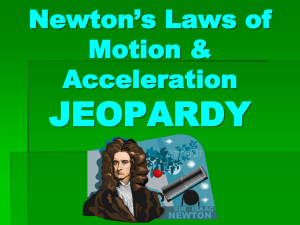Force
advertisement
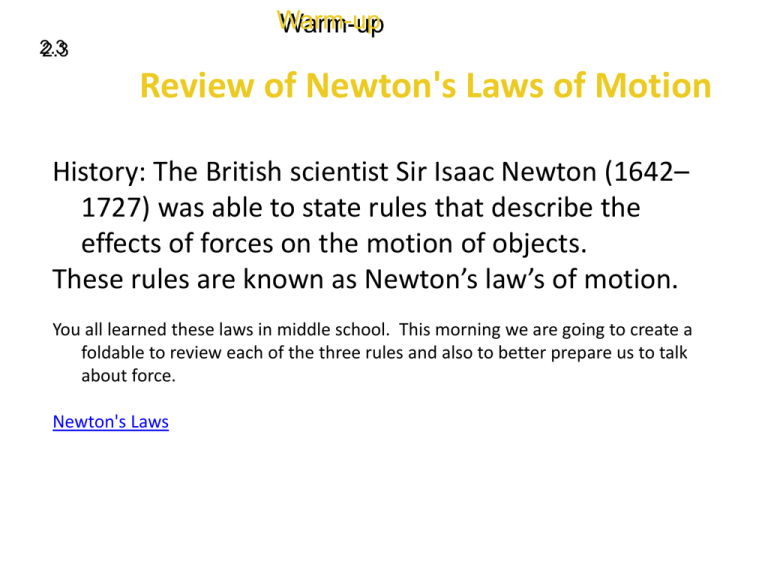
Warm-up 2.3 Review of Newton's Laws of Motion History: The British scientist Sir Isaac Newton (1642– 1727) was able to state rules that describe the effects of forces on the motion of objects. These rules are known as Newton’s law’s of motion. You all learned these laws in middle school. This morning we are going to create a foldable to review each of the three rules and also to better prepare us to talk about force. Newton's Laws Force: Balanced and Unbalanced Quarter 3 February 1, 2011 2.3 Changing Motion The force of the moving ball causes the ball at rest to move in the direction of the force. 2.3 What is force? A force is a push or pull. Sometimes it is obvious that a force has been applied. But other forces aren't as noticeable. What are some forces that we have learned about already? 2.3 Forces can cause a Changing Motion A force can cause the motion of an object to change. If you have played pool, you know that you can force a ball at rest to roll into a pocket by striking it with another ball. Which direction would the ball go? 2.3 Balanced Forces Force does not always change velocity. Review: What is velocity again? What two things change? When two or more forces act on an object at the same time, the forces combine to form the net force. How else could we represent that ? 2.3 Balanced Forces The net force on the box is zero because the two forces cancel each other. Forces on an object that are equal in size and opposite in direction are called balanced forces. 2.3 Unbalanced Forces When two students are pushing with unequal forces in opposite directions, a net force occurs in the direction of the larger force. What playground game does this sound like to you? 2.3 Unbalanced Forces The net force that moves the box will be the difference between the two forces because they are in opposite directions. Tug of war? The team with the strongest force wins! 2.3 Unbalanced Forces Sometimes unbalanced forces occur in the same direction. These forces are combined, or added together, because they are pushing on the box in the same direction. 2.3 Inertia and Mass Inertia (ih NUR shuh) is the tendency of an object to resist any change in its motion. If an object is moving, it will have uniform motion. It will keep moving at the same speed and in the same direction unless an unbalanced force acts on it. 2.3 Inertia and Mass The velocity of the object remains constant unless a force changes it. If an object is at rest, it tends to remain at rest. Its velocity is zero unless a force makes it move. The inertia of an object is related to its mass. The greater the mass of an object is, the greater its inertia. Exit Formative Assessment 1. Describe what a force is in your own words or give an example and explain your answer. 2. Calculate Net Force: Two students push a box in the same direction, and one pushes in the opposite direction. What is the net force on the box if each pushes with a force of 50N? Draw a sketch and solve the problem. 3. Jon pulls on a rope with a force of 10N and Bryce pulls in the opposite direction with a force of 8N. Are the forces on this rope balanced or unbalanced? What is the net force?






